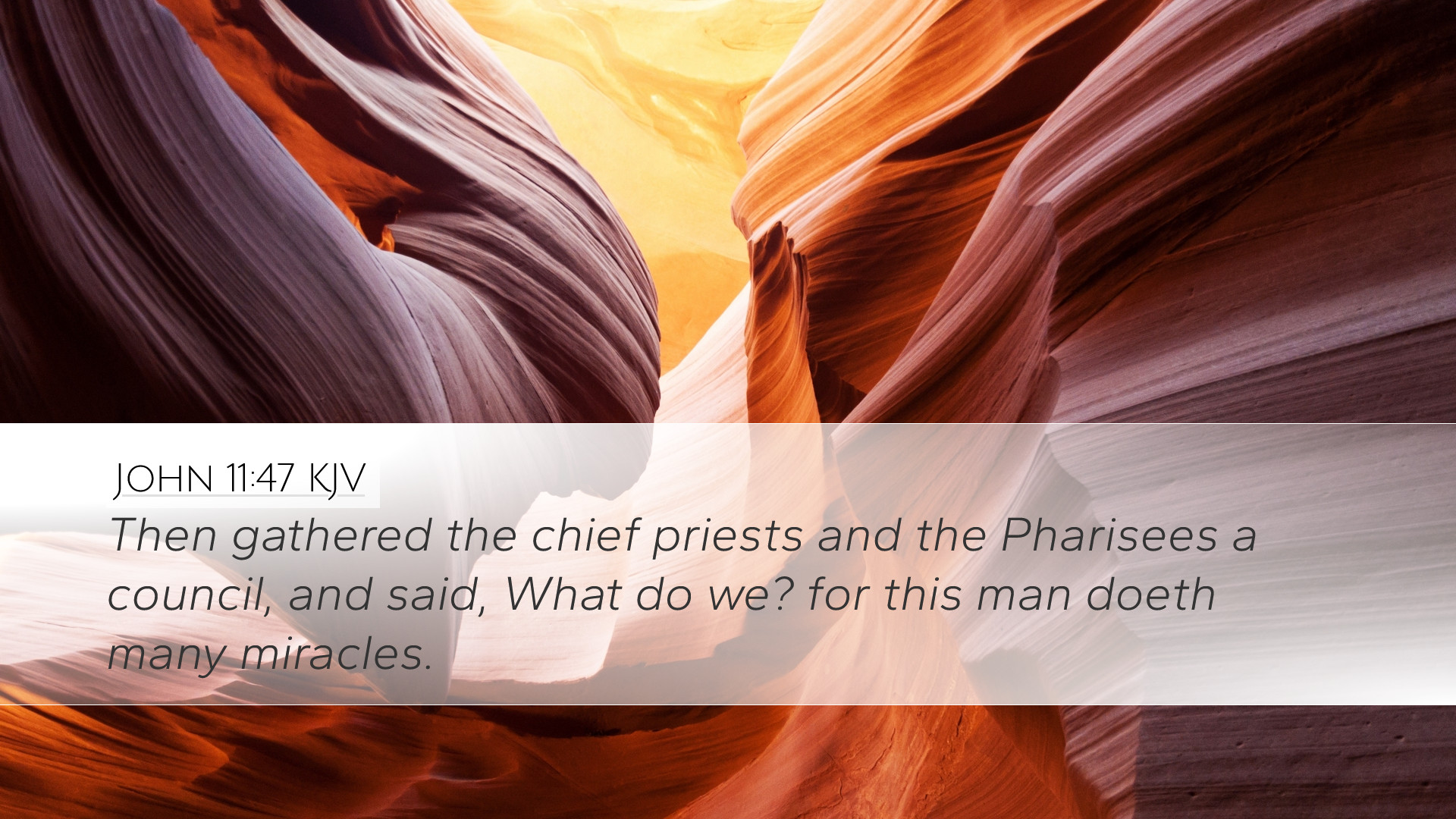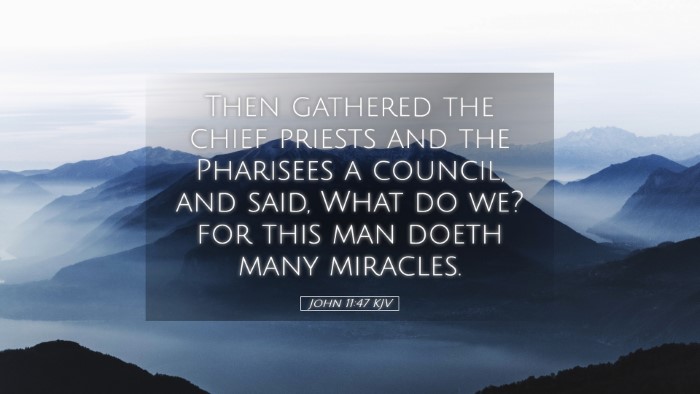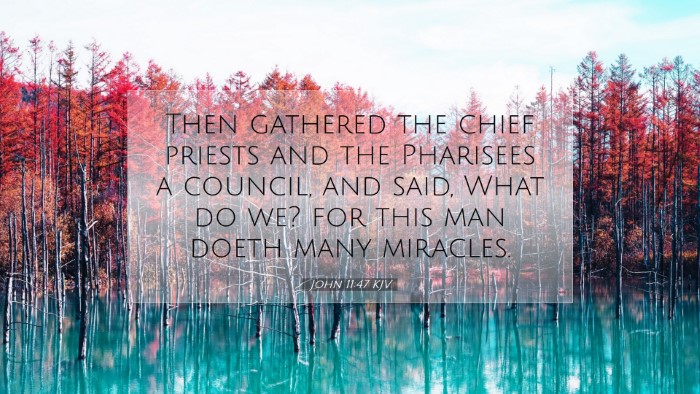Commentary on John 11:47
Verse: "Then gathered the chief priests and the Pharisees a council, and said, What do we? for this man doeth many miracles."
Introduction
John 11:47 presents a pivotal moment in the Gospel narrative, encapsulating the growing tension between the Jewish religious authorities and Jesus. As the religious leaders gather to discuss the implications of Jesus' miracles, this verse sets the stage for the ensuing events that ultimately lead to the crucifixion. This commentary aims to analyze the key elements of the verse, synthesizing insights from noted public domain commentaries, providing a rich theological exploration for pastors, students, and scholars.
Analysis of the Text
This passage can be seen as a critical turning point within the Gospel of John, signaling not only the operational dynamics within the Jewish council but also the broader implications for both the ministry of Jesus and the nascent Christian community.
Contextual Background
Prior to this meeting, Jesus had performed significant miracles, culminating in the raising of Lazarus from the dead (John 11:1-44). These acts not only intensified Jesus' popularity among the people but also posed a direct challenge to the authority of the religious leaders, as noted by Matthew Henry. The chief priests and Pharisees were alarmed at the implications of Jesus' growing following, prompting their council to deliberate on how to address the perceived threat.
The Council's Concerns
Albert Barnes emphasizes that the council's question, "What do we?" reflects a state of disarray and urgency among the Jewish leaders. Their acknowledgment of "this man"—referring to Jesus—highlights a recognition of his significance, though they view him as a threat rather than a savior. The miracles serve as signs of divine authority, yet they are met with fear and resistance from those in power.
The Nature of Miracles
In examining "this man doeth many miracles," Adam Clarke elaborates on the transformative nature of Jesus' miracles. These acts were not merely wonders; they were signs pointing to his identity as the Messiah. The religious authorities' fixation on the miracles underscores their inability to recognize the theological implications of Jesus' ministry. Instead of investigating the authenticity of his miracles and their significance, they perceive only a challenge to their established order.
Theological Implications
John 11:47 invites profound theological reflection regarding authority, faith, and the nature of true discipleship.
Authority and Fear
The Jewish leaders' fear of losing their authority is palpable. Matthew Henry observes that the fear of man can lead to destructive decisions, as prioritizing political and social stability over divine revelation can lead to spiritual blindness. This illustrates a recurring theme in the Gospels: the opposition to God’s work often comes from established religious authority.
Faith and Unbelief
While miracles are intended to elicit faith, they often expose the depths of unbelief. The leaders’ response to Jesus signifies a rejection of faith based on the evidence presented to them. Barnes notes that instead of leading to belief, the miracles become a catalyst for their plot against Jesus. This highlights a critical lesson for modern readers, urging them to align their perceptions of divine activity with scriptural truth rather than personal biases or fears.
Discipleship and Commitment
This verse serves as a contrast to genuine discipleship, which requires acknowledgment of Jesus as both Lord and Savior. The leaders' dilemma emphasizes a choice faced by all who encounter Jesus: to accept the truth of his identity or to resist it out of fear or self-preservation. Clarke reinforces this by emphasizing that true discipleship involves embracing the cost associated with following Christ, which the leaders were unwilling to do.
Conclusion
John 11:47 provides a window into the conflict that leads to the climax of the Gospel narrative. The gathering of the chief priests and Pharisees reveals the complexities of faith and authority, the nature of miracles, and the challenges of authentic discipleship. As pastors, students, and scholars engage with this text, they are invited to reflect on their own responses to Christ’s works in their lives and the implications of their faith commitments.
Reflection Questions
- What does this passage teach us about the nature of authority in the church today?
- How can we guard against the fear of losing power or influence when faced with God’s work?
- In what ways do we recognize or deny the miracles God is performing in our midst?
- How can we cultivate a community of believers that reflects the true nature of discipleship?
In meditative reflection upon John 11:47, may we seek to understand the profound implications of recognizing Jesus amidst the complexities of human religious structures, always striving to align our hearts with the truth revealed in scripture.


